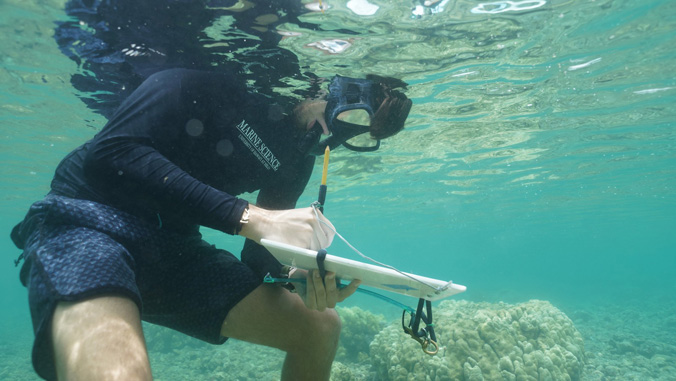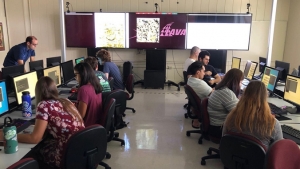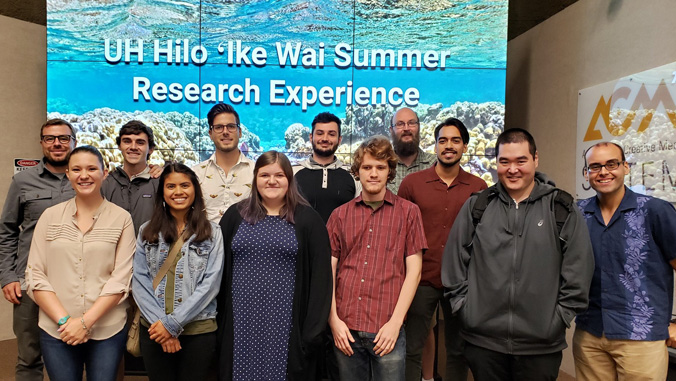
A team of University of Hawaiʻi at Hilo faculty and undergraduate students investigated whether or not computer vision tools can detect disease on coral reefs as well as the human eye and found that machines can complement human evaluation.
As part of a five-week research experience conducted over the summer, the team analyzed the accuracy of physical eyes-on surveys conducted in the water compared to surveys based on photographs of the reef. The main goal of the project was to develop advanced tools in data science in order to answer cross-disciplinary environmental questions.
Students studying data science at UH Hilo learn skills in acquiring, archiving and extracting knowledge from data in its various forms in order to find solutions to problems. UH Hilo’s certificate in data science program also focuses on teaching students how to successfully communicate to peers and the public about the underlying structure and patterns found within the data being generated.
Combining strengths
UH Hilo undergraduate students with a background in marine science and computer science were encouraged to apply for the summer program. The research course had both field and classroom components and included a blend of marine science, statistics and computer science activities. Students were challenged to apply advanced statistics, master a variety of deep learning methods, and learn about the health and structure of underwater coral communities.

Sofia Ferreira, a UH Hilo marine science major, said she enjoyed interacting with students from other majors. “We had to work together because the marine science people know how to survey, but when it comes to incorporating these machine learning methods, we need the computer science students to help with it. This internship made me want to pursue the data science certificate.”
- Related UH News story: Data science at UH Hilo expands to meet high demand, November 19, 2018
The summer program was co-led by John Burns, assistant professor of marine science, Travis Mandel, assistant professor of computer science and engineering, and Grady Weyenberg, assistant professor of mathematics.
“Combining professors and students from multiple disciplines provided creative insight and a much greater capacity to solve problems, which ultimately enabled us to develop a unique strategy to test if computers have the capacity to assist with detecting diseases and anomalies on coral reefs,” explains Burns, director of the Multiscale Environmental Graphical Analysis (MEGA) Laboratory at UH Hilo. “The results show that there are cases where photography-based analysis is useful.”
The UH Hilo Data Science Summer Research Experience was funded by the National Science Foundation through the statewide Experimental Program to Stimulate Competitive Research initiative (EPSCoR).
For more on the project read the full story at UH Hilo Stories.
—By Leah Sherwood, a UH Hilo tropical conservation biology and environmental science graduate student


